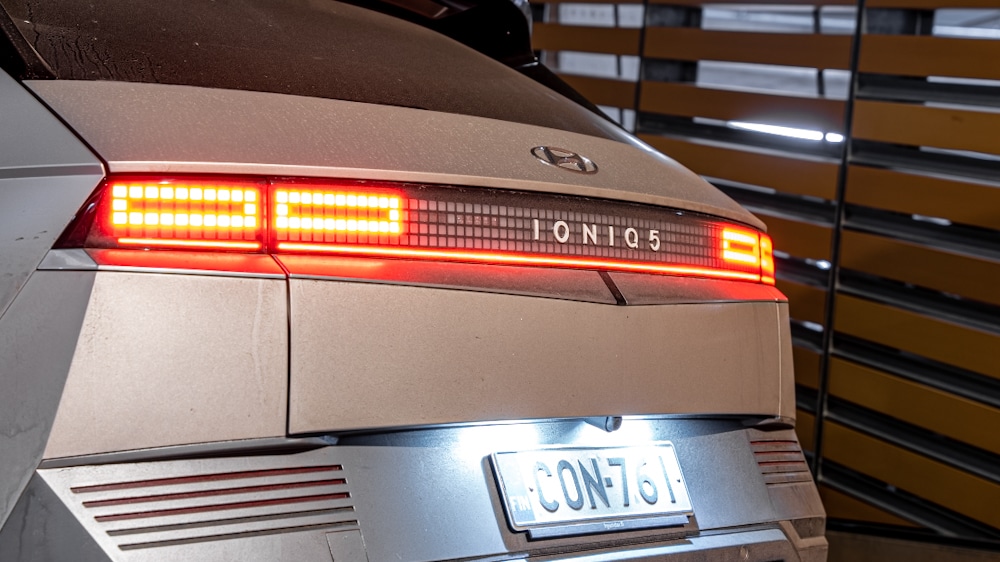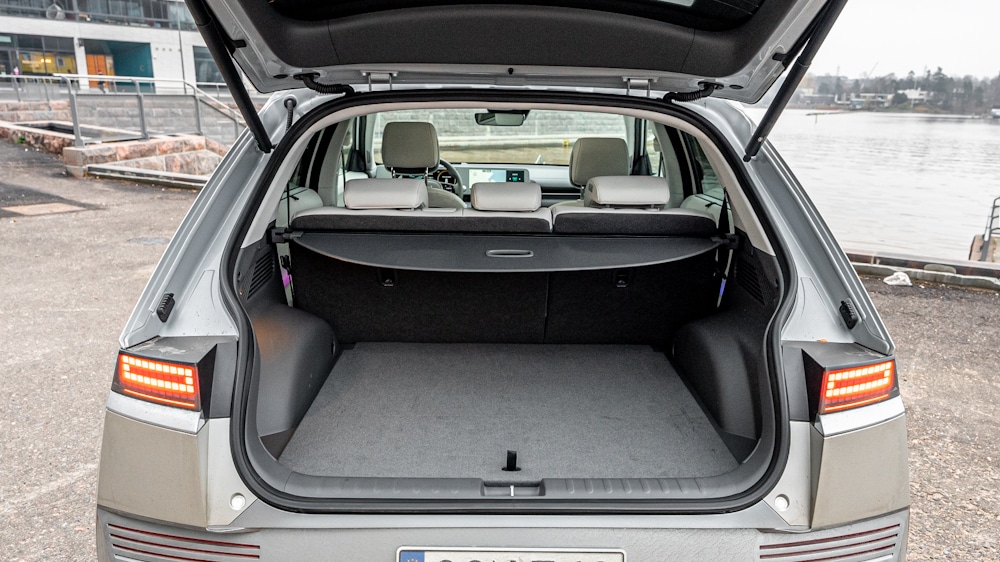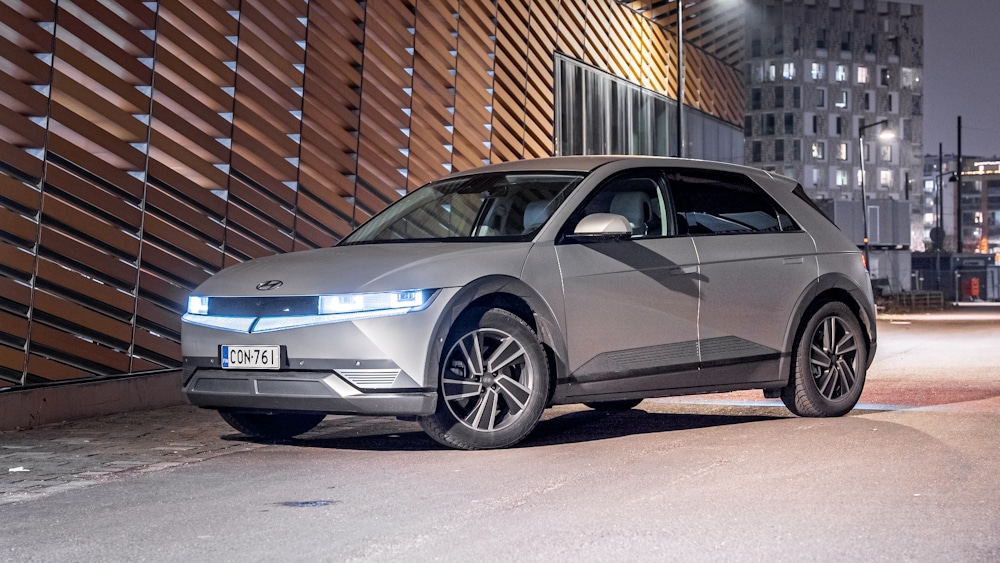Hyundai’s Ioniq 5 has been the talk of the coffee table ever since the first information about the car began to trickle out. Touted as faster than its rivals, the Ioniq 5’s charging speed and personal, eye-catching exterior design are its trump cards.
Design – angular design and pixel lights
The size of the Ioniq 5 is difficult to judge from just looking at pictures. The angular design, large fenders and high profile tyres are so striking that you might think the car is smaller than its size. The first time you see the car in the wild, the size may surprise you.
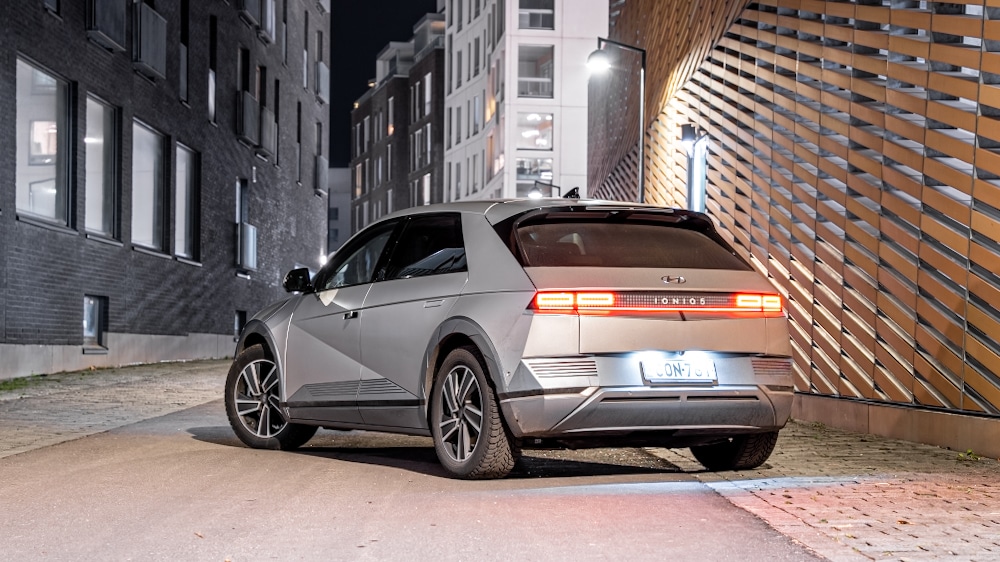
The design is full of sharp cuts and there are no rounded lines on the exterior. At the front, attention is drawn to the angular daytime running lights, made up of 256 separate pixels, and the row of LED lights extending from one side of the front bumper to the other. The rear lights follow the design of the front lights and are a very clear rectangle of pixels.
The high side skirt and low lenses give the side profile a low profile. To reduce air resistance, the door handles move with the body when the car is in motion and locked.
However, the keyless car allows easy access to the door handles, which automatically come out when the driver enters the car. However, the doors do not lock automatically when you walk away from the car, but have to be manually locked with the key.

The exterior is sure to be an exceptionally strong point of contention from all sides. The angularity is not to everyone’s taste, but there seems to be a lot of interest in the car, even if the looks don’t quite catch your eye.
This was something to get used to during the week-long test drive, when there were plenty of tyre-kicking and admiring fellow motorists at various charging stations – and the looks clearly split opinion!
Interior – plenty of space and features, but also room for improvement
Stepping inside the Ioniq 5, it’s easy to notice the spacious interior space made possible by the car’s exterior dimensions. There’s plenty of space both at the front and the rear. The rear passenger seats are easily adjustable lengthways via buttons on the side of the front seat. There’s no shortage of legroom in the rear, even on the longer thigh.
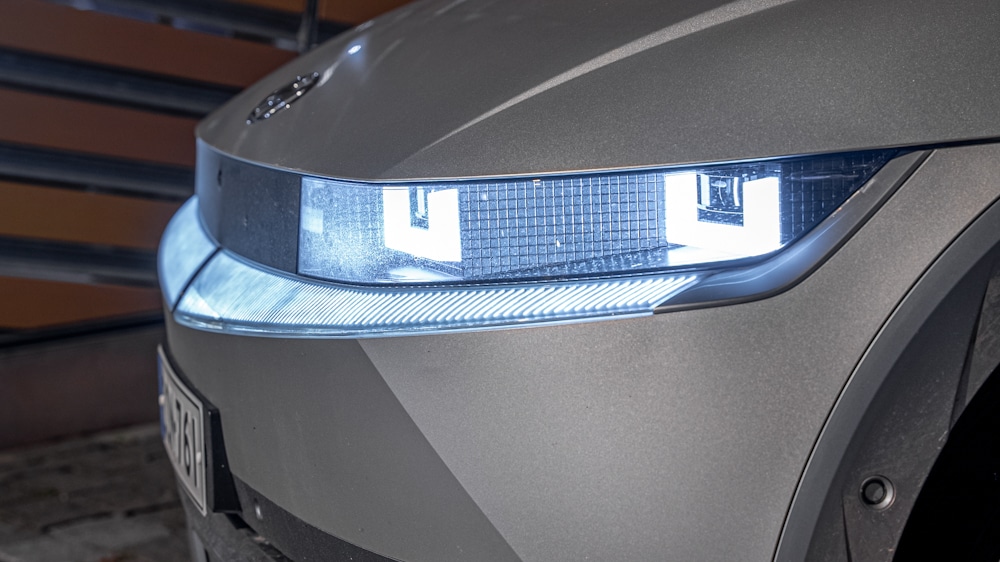
In terms of materials, it’s hard to find fault with the interior. The finish seems to be spot on and the materials are not the cheapest. The interior in the test car was a combination of light grey and black. The striking and dominant Korean-style purple interior mood lighting initially evokes somewhat strange thoughts in a Scandinavian environment.
The light grey leather seats in the test car come as standard on the Premium trim level and feel high quality in terms of material and design. The interior’s versatile features include electrically adjustable lumbar support in the front seats, which significantly increases comfort when the seat is in the reclining position for a nap. The electric lumbar support lacks height adjustment.
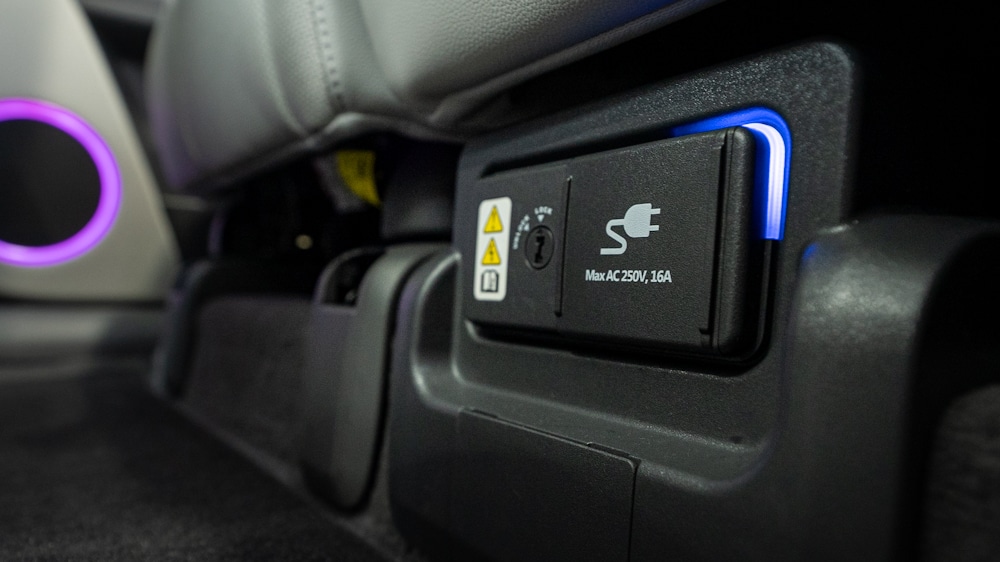
Travel comfort is enhanced by, among other things, sunshades on the rear windows and a 220-volt socket for the car’s high-voltage system, which can be found under the rear seats. There are also several usb sockets inside for charging smaller devices.
In terms of design, the interior is a complete departure from the exterior. The futuristic, angular exterior design seems to be absent from the interior. Even the cabin, which is dated in places, has been designed with practicality in mind, with a 12.25-inch touchscreen and physical buttons for the climate and radio controls.
Surprisingly, the car’s clunky navigation system is one of the Ioniq 5’s weakest links, although the car otherwise seems at least up to date in many technical respects. One of the biggest problems with the visually outdated navigation system seems to be finding destinations. For example, when entering Helsinki as a destination, the car gives a beauty salon in Helsinki as the first option in the list, and not just ‘Helsinki’ as an option, even in the list of suggestions.
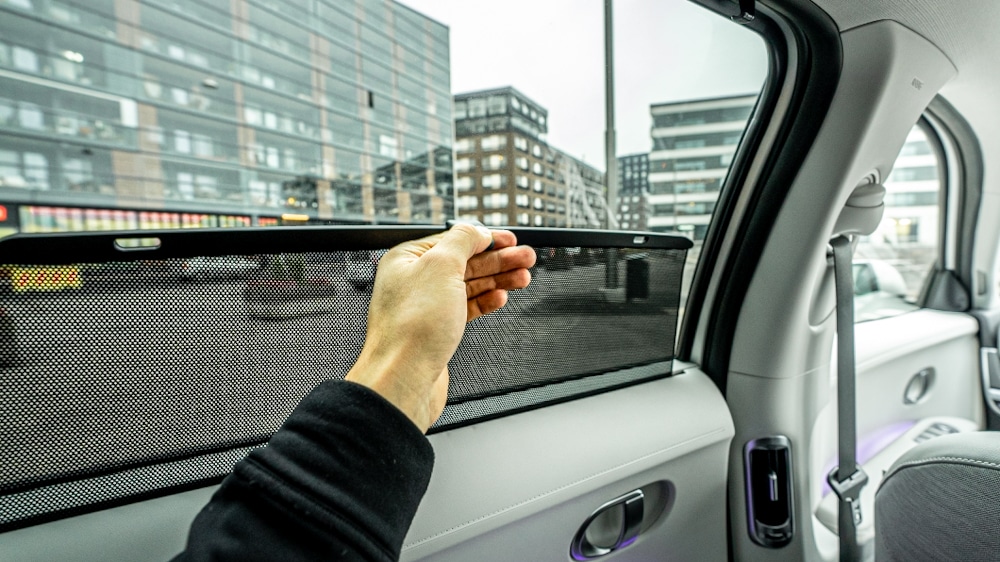
Another missing feature related to navigation is the estimated battery charge at the destination. Once the destination is entered and navigation to the destination is started, the system does not provide any estimate of whether the current battery charge will get you there or whether the car needs to be recharged en route. This information is very relevant and would greatly facilitate journey planning.
The problem is helped somewhat by the fact that the remaining operating distance shown on the instrument panel is exceptionally accurate. Many brands are used to seeing an over-optimistic remaining range of up to tens of percent, but the Ioniq 5’s range was reliably accurate.
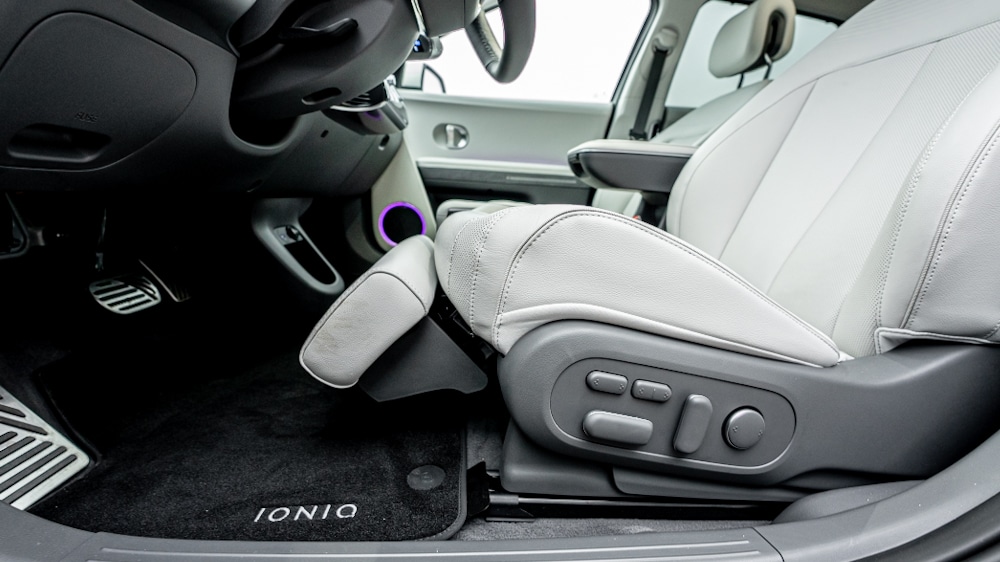
The boot is a reasonable 527 litres, and up to 1600 litres with the rear seats folded. The floor of the boot rises quite high and the difference in lift height is clearly noticeable if you move to the Ioniq 5 from a normal passenger car. Under the front bonnet is a small 57-litre storage area for things like charging cables.
Technology – 800 volt system allows 220 kW of charging power
The Ioniq 5 is now available in both rear and four-wheel drive. The example tested was a rear-wheel drive single engine version with 160 kW of power, while the second version is a two-engined 225 kW four-wheel drive model. Both have the same 72.6 kWh battery and the stated WLTP combined operating ranges are 481 and 460 km.
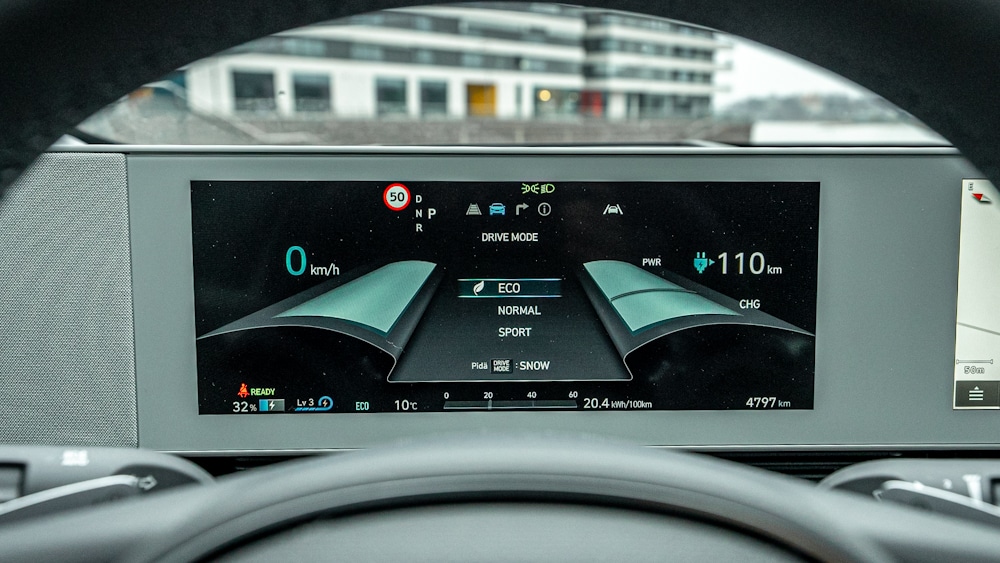
The maximum charging power the car can receive is 220 kW. In practice, maximum charging power is only achieved under optimal conditions, so the reality is something else.
During the week-long test drive, the car was charged several times on powerful DC chargers and the maximum charge power received by the car during the week was 113 kW. The outside temperature was around 10 degrees Celsius and the car arrived at the charger at 39% battery charge, warm at the end of a long motorway journey.
When charging the car from a 3-phase AC charger, the Ioniq 5 can receive 10.5 kW of power from the car’s internal charger. This is a very typical output for a full electric car and, for example, a 22 kW public charger in a shopping centre (from which the Ioniq 5 receives 10.5 kW) will add around 45-60 extra kilometres to the battery.
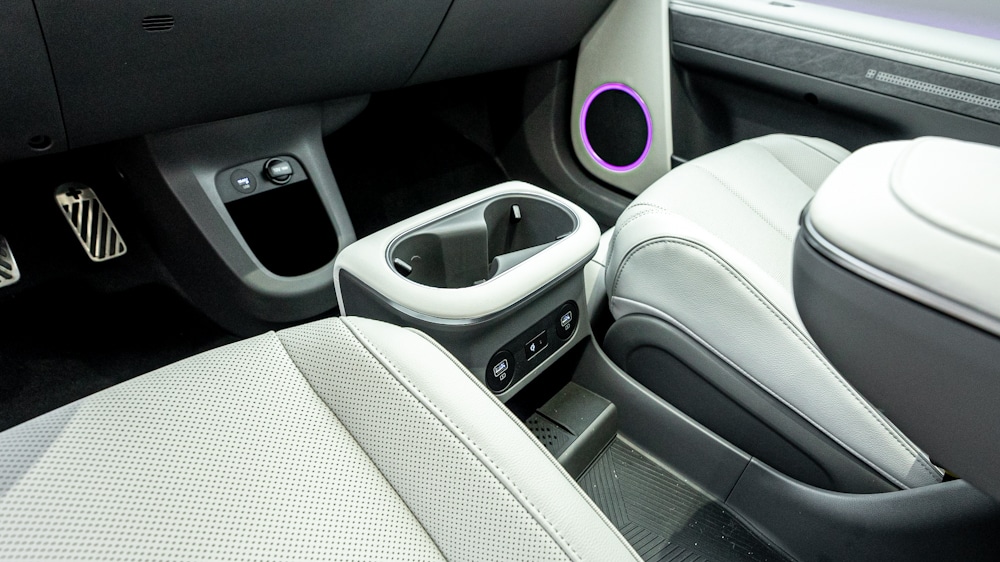
The car’s electricity consumption figures hover at a tolerable level when the average outside temperature is around 10 degrees Celsius. The combined fuel consumption of the rear-wheel drive Ioniq 5 is 16.8 kWh/100 km. In urban driving, the average consumption during the test drive was in the moderate range of 16-18 kWh/100km.
As speeds increased to motorway speeds, consumption rose significantly higher to around 23.5-24 kWh/100km. The average consumption over the longer term and over 1000 km was 20.3 kWh/100km according to the trip computer.
The Ioniq 5’s electricity consumption figures are quite reasonable, especially in the city, but at motorway speeds, air pollution was clearly reflected in consumption. As speeds dropped from 120 km/h to 100 km/h, consumption also dropped significantly to around 20 kWh/100 km.
The actual operating range on a single battery in mixed driving with the Ioniq 5 is therefore around 300-350 km in autumn temperatures in the teens. In city driving alone, the range is close to 400 kilometres.
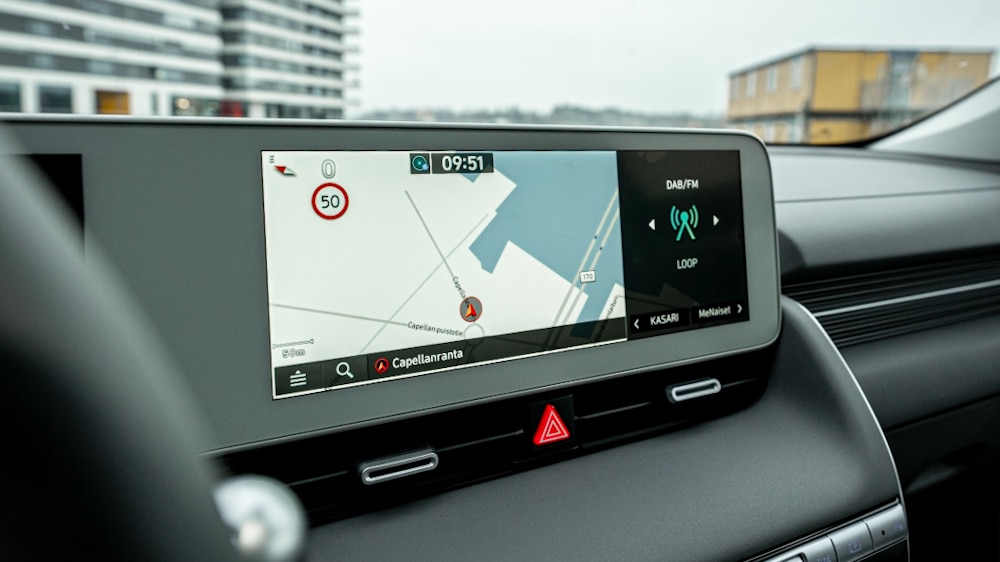
Regardless of the equipment level, the car always comes with automatic headlamp control as standard, so that the car automatically switches between low and high beam. There are significant differences between manufacturers in the way the automatic headlamps work, and it is not always possible to avoid oncoming headlamps flickering. With Ioniq 5, light changing is a matter of course, and the car takes care of changing the lights in a systematic and systematic way, at the right time.
In addition to the 220V socket under the rear seats, the car is also powered from the car’s charging port. Hyundai’s Vehicle-to-Load technology allows up to 3.6 kW of power to be drawn from the car’s charging port. This can be used, for example, to run a small space heater or an electric lawnmower in a cottage without electricity.
Drivability – Lane Keeping Assist rows and rows
In terms of driveability, the car is comfort-oriented, and that traditional driving feel isn’t exactly the sharpest and most precise in the Ioniq 5. But comfort-focused doesn’t automatically mean bad, because it’s the smoothness and effortlessness of the ride that feels so good behind the wheel of this car.
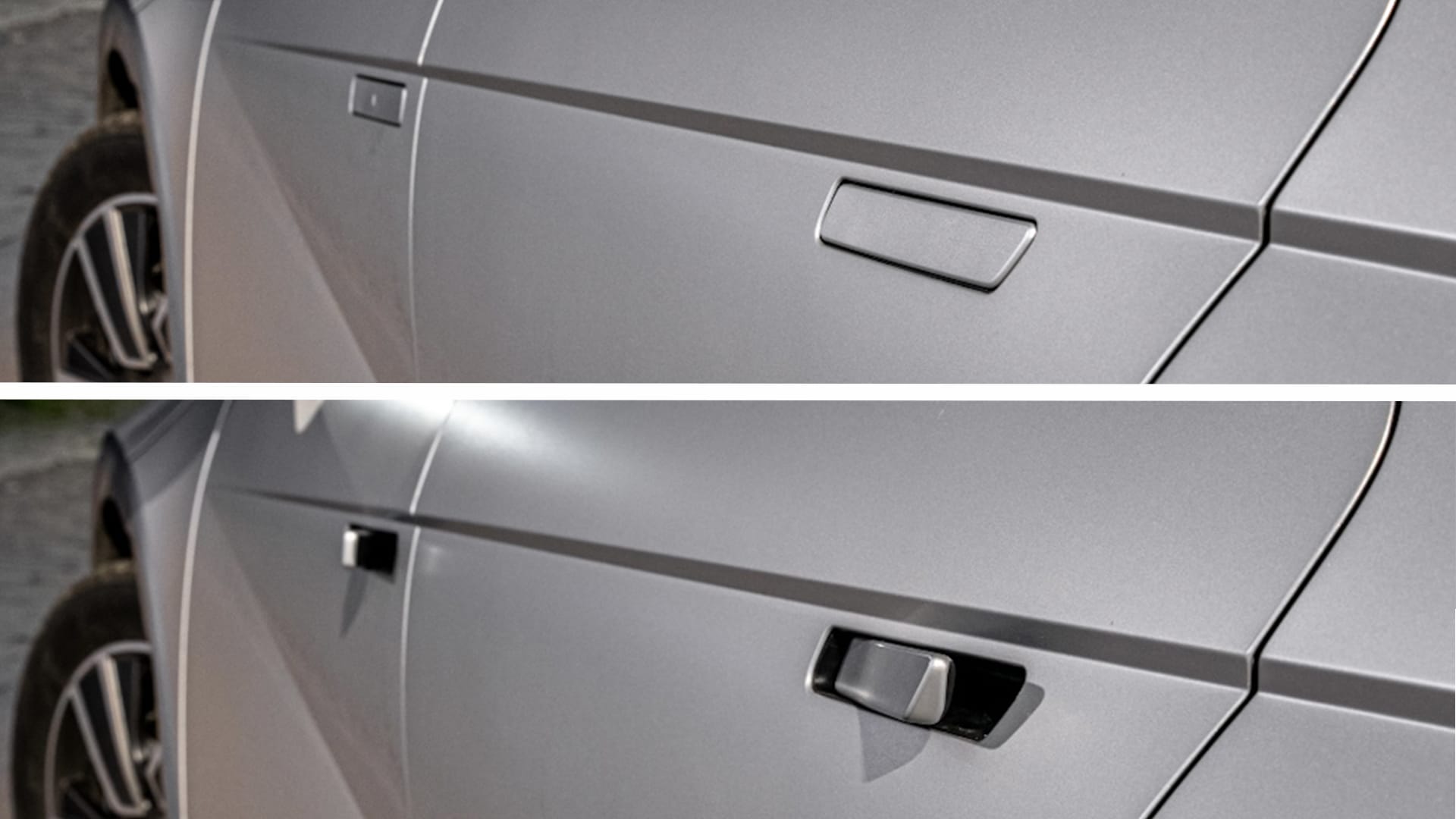
The comfort of the seat and the softness and quietness of the friction tyres make the ride very enjoyable. Performance should not be forgotten, despite the horsepower. All 217 electric horses propel even the rear-wheel-drive Ioniq 5.n briskly into motion when needed, even if the 7.4 seconds from zero to 60 km/h acceleration is not mind-boggling on paper. The 350 Nm of torque provided by the electric motor is, of course, immediately available.
Drivability, especially throttle response, is greatly influenced by the car’s different driving modes, with a choice of Eco, Normal and Sport modes. The 12.25-inch instrument panel changes in appearance and colour scheme as the driving modes are changed.
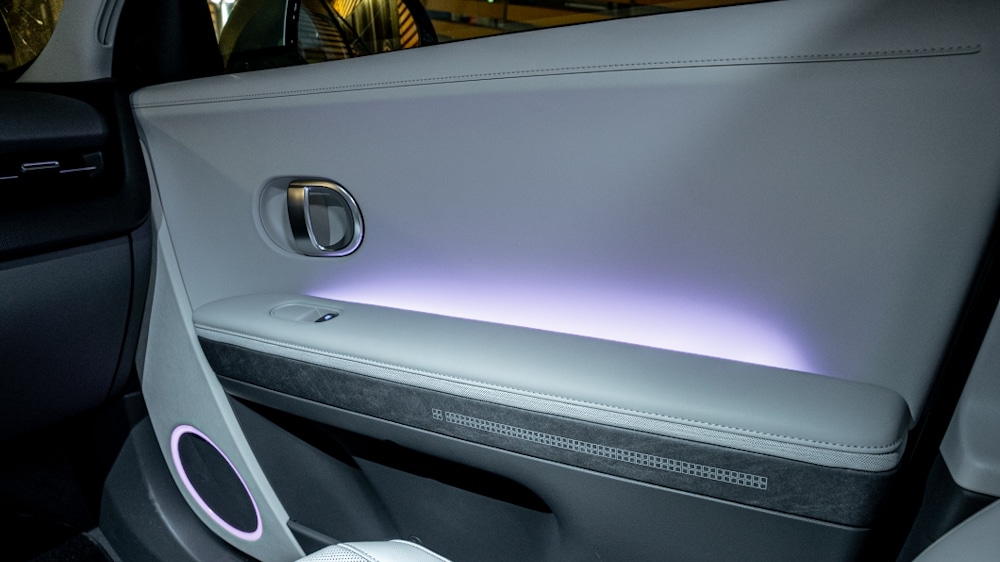
The intensity of energy recovery can be adjusted via the steering wheel flaps. There are four levels, the first three of which are closest to the driveability of a normal internal combustion engine car, while the deceleration caused by the electric motor is the lowest. The brake must be depressed to bring the car to a complete stop.
in i-Pedal mode, the deceleration and energy absorption is the highest, allowing single pedal tactics with just the accelerator pedal.
The car’s adaptive cruise control does its job well, while the lane-keep assist system is more sophisticated. Lane assist is generally good at recognising lines, even if the lane line isn’t the freshest white, but the car does occasionally make an awkward back-and-forth steering wheel turn, especially in a small bend at higher speeds on the motorway.
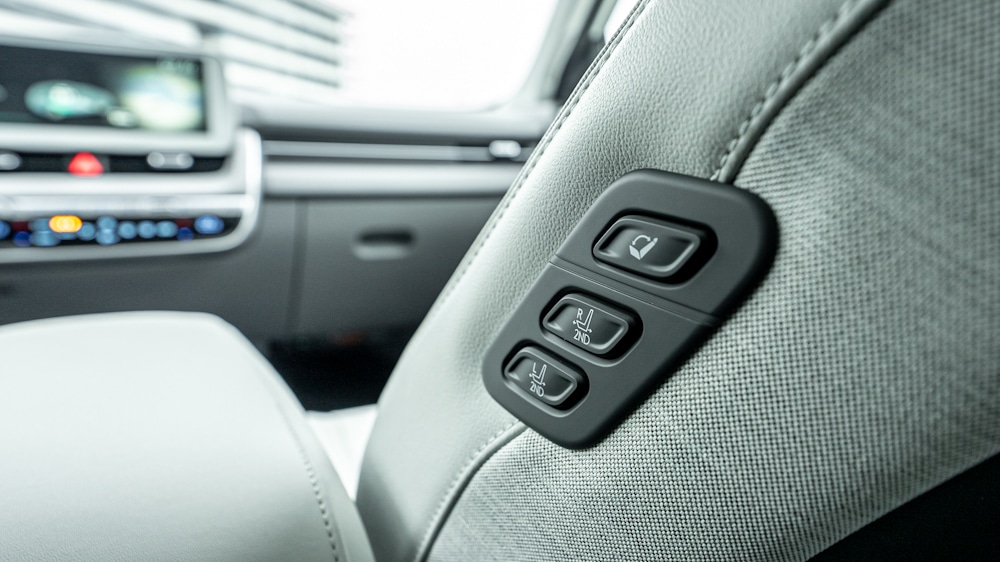
The test car’s augmented reality windscreen display puts all the information the driver needs directly on the windscreen, and behind the car in front, for example, the car draws a small symbol on the screen, which can be helpful in poor visibility. When changing lanes, directional arrows are projected onto the windscreen when Lane Keeping Assist is active.
All in all, the Ioniq 5 is a very welcome newcomer to the all-electric car market, with its own personal appearance and good interior space. A big plus also comes from the possibility to draw 220V power from the car at 3.6 kW. The possibility of choosing a rear- or four-wheel drive all-electric car is also not self-evident, at least not at the early stages of production of the new model.
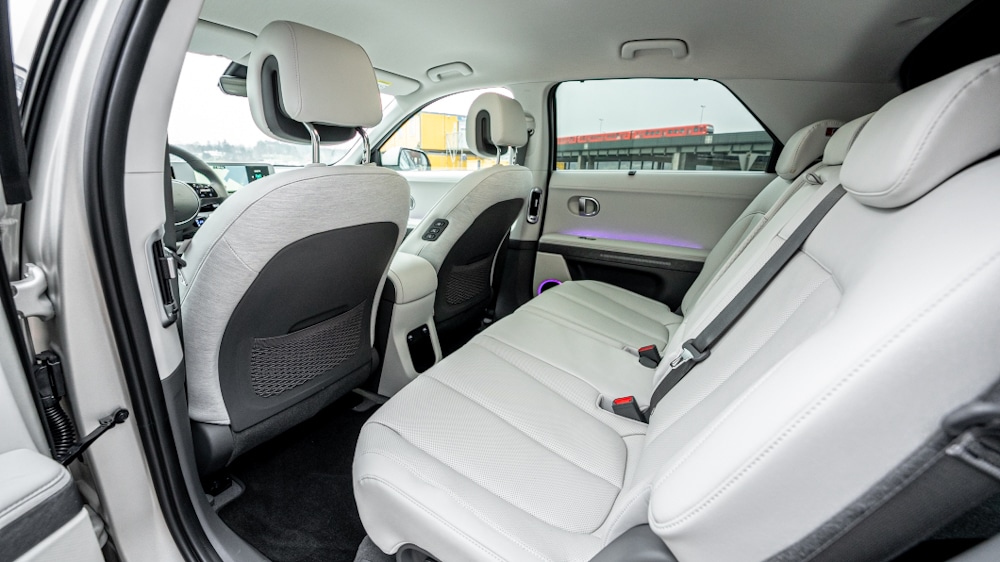
The Ioniq 5, the finalist in the Car of the Year in Finland final, has a good chance of claiming the overall win from among the five other finalists. The winner will be announced mid-December on 16 December.
Hyundai Ioniq 5 73 kWh Premium (rear-wheel drive)
- Electric motor power: 160 kW. (217 hp)
- Electric motor torque: 350 Nm.
- Acceleration: 7.4 sec. (0-100 km/h)
- Acceleration: 4.7 sec (80-120 km/h)
- Driving battery capacity: 72.6 kWh.
- Combined consumption: 16.8 kWh/100km.
- Declared range (combined): 481 km (WLTP)
- Declared range (urban): 686 km (WLTP)
- Test-driven range: 300-350 km.
- Fuel consumption in test drive: 16-24 kWh/100km.
- Maximum charging power (DC): 220 kW
- Maximum charging power (AC): 10.5 kW
- Deadweight: 1910-1990 kg.
- Boot space: 527 l.
- Towing capacity: 1600 kg.
- Turning radius: 5,99 m.
- Ioniq 5 from price: 48 720 euro (Style trim level)
- Starting price: €53 592
